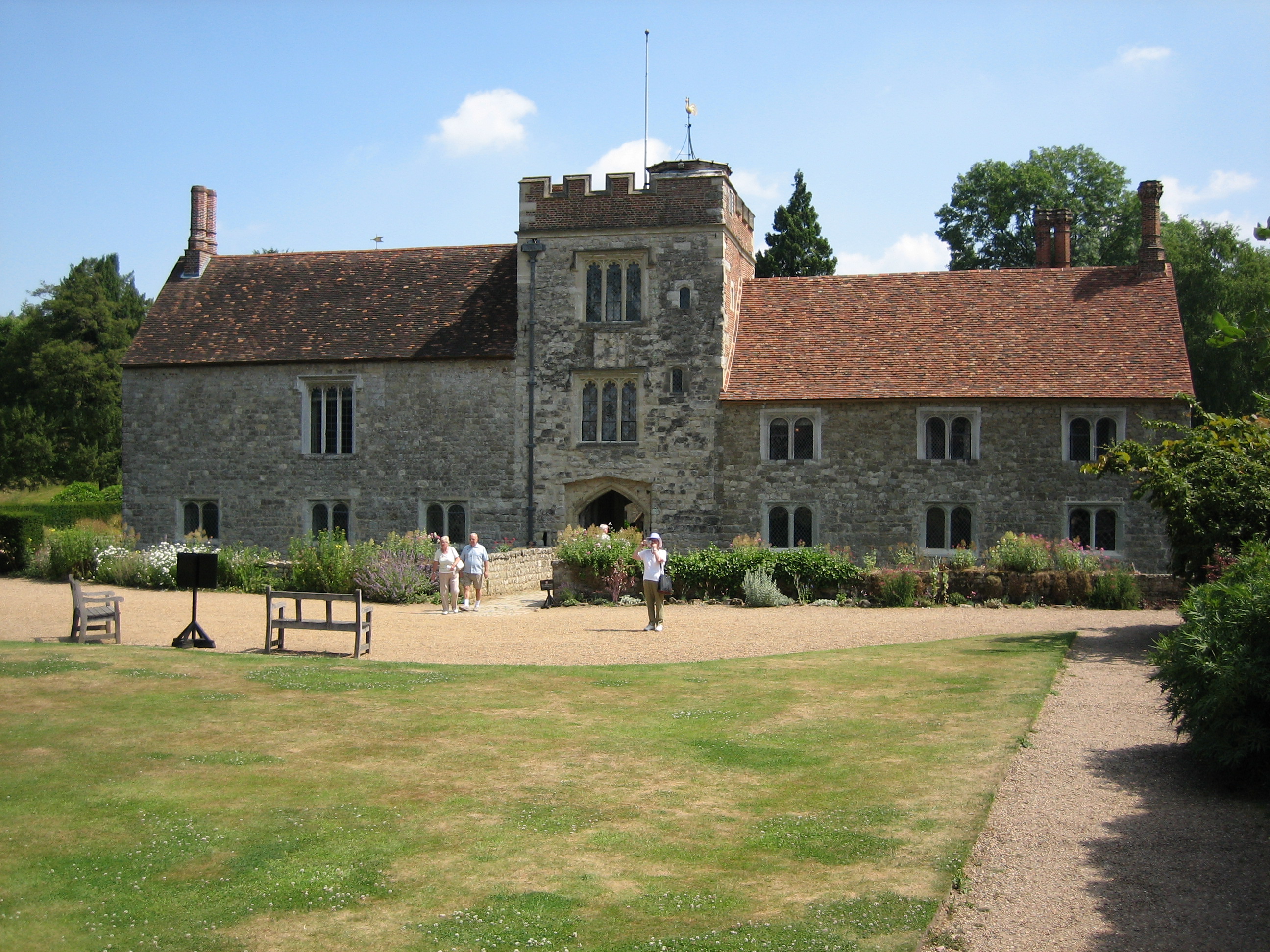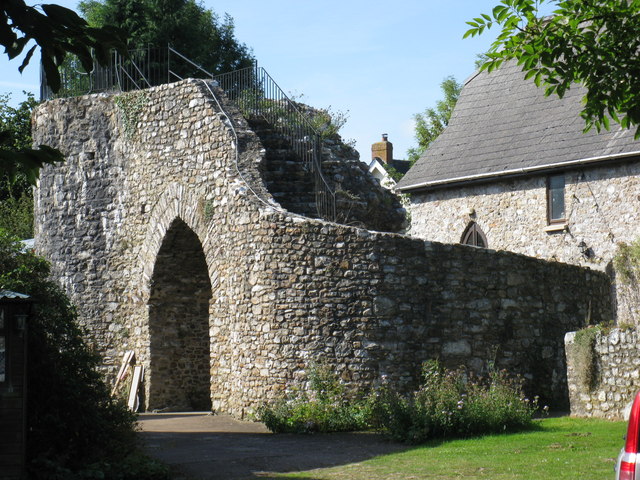|
Kennerleigh
Kennerleigh is a village and civil parish in Devon, England. The church is dedicated to St John the Baptist, which underwent significant restoration around 1847. There was previously a chapel dedicated to St. Clement which is first recorded in 1334. The village, in ancient times known as Kynwarthlegh, was a parish of Crediton Hundred. Lords of the manor included members of the Hidon and Dowrich/Dowrish families. Polwhele, in his "History of Devon" states that Thomas Dowrich sold the manor to John Northcote. According to tradition, however, memorialised in a family card table, he instead gambled away the manor to Sir Arthur Northcote, 2nd Baronet in a game of piquet. Sabine Baring-Gould Sabine Baring-Gould ( ; 28 January 1834 – 2 January 1924) of Lew Trenchard in Devon, England, was an Anglican priest, hagiographer, antiquarian, novelist, folk song collector and eclectic scholar. His bibliography consists of more than 1, ... describes the game in his 1898 book ' ... [...More Info...] [...Related Items...] OR: [Wikipedia] [Google] [Baidu] |
Dowrich
Dowrich (anciently Dowrish) is an historic estate in the parish of Sandford, on the River Creedy, three miles north-east of Crediton in Devon, England. Between the 12th century and 1717 it was the seat of the ancient gentry family of Dowrish (originally ''de Dowrish'') which took its name from the estate where it had become established before the reign of King John (1199–1216), when it built a castle keep on the site. A 15th century gatehouse survives there today, next to the ancient mansion house. Mansion house The grade II listed mansion house, known as Dowrich House, is situated on a hill about two miles north-east of Sandford Church. It was described as follows by Polwhele (died 1838): Polwhele, Richard, ''History of Devonshire'', Vol.2, p.38 :"To enter the dwelling-house we pass through a building called the Prison, which indeed has all the appearance of one, and tradition says that it was such; for it is reported that the Dowrich family had great powers, and that it was ... [...More Info...] [...Related Items...] OR: [Wikipedia] [Google] [Baidu] |
Crediton Hundred
The hundred of Crediton was the name of one of thirty-two ancient administrative units of Devon, England. The parishes in the hundred were: Colebrooke; Crediton; Kennerleigh; Morchard Bishop Morchard Bishop is a village and civil parish in Mid Devon in the English county of Devon. It has a population of 975, and contains a primary school, two churches, and a playing field with tennis court. Notable past residents include Ernest ...; Newton St Cyres and Sandford. See also * List of hundreds of England and Wales - Devon References Hundreds of Devon {{Devon-geo-stub ... [...More Info...] [...Related Items...] OR: [Wikipedia] [Google] [Baidu] |
Devon
Devon ( , historically known as Devonshire , ) is a ceremonial and non-metropolitan county in South West England. The most populous settlement in Devon is the city of Plymouth, followed by Devon's county town, the city of Exeter. Devon is a coastal county with cliffs and sandy beaches. Home to the largest open space in southern England, Dartmoor (), the county is predominately rural and has a relatively low population density for an English county. The county is bordered by Somerset to the north east, Dorset to the east, and Cornwall to the west. The county is split into the non-metropolitan districts of East Devon, Mid Devon, North Devon, South Hams, Teignbridge, Torridge, West Devon, Exeter, and the unitary authority areas of Plymouth, and Torbay. Combined as a ceremonial county, Devon's area is and its population is about 1.2 million. Devon derives its name from Dumnonia (the shift from ''m'' to ''v'' is a typical Celtic consonant shift). During ... [...More Info...] [...Related Items...] OR: [Wikipedia] [Google] [Baidu] |
Mid Devon
Mid Devon is a local government district in Devon, England. Its council is based in Tiverton. The district was formed under the Local Government Act 1972, on 1 April 1974 by the merger of the borough of Tiverton and Crediton urban district together with Tiverton Rural District, and Crediton Rural District. It was originally called Tiverton District, but was renamed in 1978 by resolution of the district council. Geography Mid Devon shares borders with several other Devon districts as well as the county of Somerset. Neighbouring districts include Exeter, East Devon, North Devon, Teignbridge, West Devon and Torridge. The area of Mid Devon, according to the Office for National Statistics Census table KS101EW is 91293.48 hectares, or 912.9348 sq kilometers, or 352.5 square miles. Rivers The Exe, the Culm, the Yeo, the Dalch, the Little Dart, the Taw, the Dart, the Brockley, the Creedy and the Spratford Stream flow through the district. Raddon Top Raddon Top (772& ... [...More Info...] [...Related Items...] OR: [Wikipedia] [Google] [Baidu] |
United Kingdom Census 2011
A Census in the United Kingdom, census of the population of the United Kingdom is taken every ten years. The 2011 census was held in all countries of the UK on 27 March 2011. It was the first UK census which could be completed online via the Internet. The Office for National Statistics (ONS) is responsible for the census in England and Wales, the General Register Office for Scotland (GROS) is responsible for the census in Scotland, and the Northern Ireland Statistics and Research Agency (NISRA) is responsible for the census in Northern Ireland. The Office for National Statistics is the executive office of the UK Statistics Authority, a non-ministerial department formed in 2008 and which reports directly to Parliament. ONS is the UK Government's single largest statistical producer of independent statistics on the UK's economy and society, used to assist the planning and allocation of resources, policy-making and decision-making. ONS designs, manages and runs the census in England an ... [...More Info...] [...Related Items...] OR: [Wikipedia] [Google] [Baidu] |
Central Devon (UK Parliament Constituency)
Central Devon is a constituency represented in the House of Commons of the UK Parliament since 2010 by Mel Stride, a Conservative. History The constituency was created for the 2010 general election, following a review of parliamentary representation in Devon by the Boundary Commission for England, which increased seats in the county from 11 to 12. Central Devon covers parts of the East Devon, Mid Devon, Teignbridge and West Devon districts. The wards from the last election presented a notional Conservative majority of just over 1,700, making it a marginal seat at the first election. Despite this, Mel Stride's majority was 17.1 percentage points and an absolute majority. UK Polling report, Retrieved 29 May 2010 Boundaries The constituency contains |
Civil Parish
In England, a civil parish is a type of Parish (administrative division), administrative parish used for Local government in England, local government. It is a territorial designation which is the lowest tier of local government below districts of England, districts and metropolitan and non-metropolitan counties of England, counties, or their combined form, the Unitary authorities of England, unitary authority. Civil parishes can trace their origin to the ancient system of Parish (Church of England), ecclesiastical parishes, which historically played a role in both secular and religious administration. Civil and religious parishes were formally differentiated in the 19th century and are now entirely separate. Civil parishes in their modern form came into being through the Local Government Act 1894, which established elected Parish councils in England, parish councils to take on the secular functions of the vestry, parish vestry. A civil parish can range in size from a sparsely ... [...More Info...] [...Related Items...] OR: [Wikipedia] [Google] [Baidu] |
Victorian Restoration
The Victorian restoration was the widespread and extensive refurbishment and rebuilding of Church of England churches and cathedrals that took place in England and Wales during the 19th-century reign of Queen Victoria. It was not the same process as is understood today by the term building restoration. Against a background of poorly maintained church buildings, a reaction against the Puritan ethic manifested in the Gothic Revival, and a shortage of churches where they were needed in cities, the Cambridge Camden Society and the Oxford Movement advocated a return to a more medieval attitude to churchgoing. The change was embraced by the Church of England which saw it as a means of reversing the decline in church attendance. The principle was to "restore" a church to how it might have looked during the " Decorated" style of architecture which existed between 1260 and 1360, and many famous architects such as George Gilbert Scott and Ewan Christian enthusiastically accepted c ... [...More Info...] [...Related Items...] OR: [Wikipedia] [Google] [Baidu] |
Lords Of The Manor
Lord of the Manor is a title that, in Anglo-Saxon England, referred to the landholder of a rural estate. The lord enjoyed manorial rights (the rights to establish and occupy a residence, known as the manor house and demesne) as well as seignory, the right to grant or draw benefit from the estate. The title continues in modern England and Wales as a legally recognised form of property that can be held independently of its historical rights. It may belong entirely to one person or be a moiety shared with other people. A title similar to such a lordship is known in French as ''Sieur'' or , in German, (Kaleagasi) in Turkish, in Norwegian and Swedish, in Welsh, in Dutch, and or in Italian. Types Historically a lord of the manor could either be a tenant-in-chief if he held a capital manor directly from the Crown, or a mesne lord if he was the vassal of another lord. The origins of the lordship of manors arose in the Anglo-Saxon system of manorialism. Following the Norman c ... [...More Info...] [...Related Items...] OR: [Wikipedia] [Google] [Baidu] |
Hemyock Castle
Hemyock Castle is a ruined 14th-century castle in the village of Hemyock, Devon, England. It was built by Sir William Asthorpe after 1380 to a quadrangular design. It would have been visually impressive, but not particularly functional, with various intrinsic flaws. By the 16th century it had fallen into ruin and, following its use during the English Civil War in the mid-17th century, it was pulled down (slighted). In the 21st century the site is occupied by the fragments of the original castle; and Castle House, an 18th-century house built within the site, and restored as private home at the end of the 20th century. History 11th-15th centuries The castle is located in the Culm valley in the Blackdown Hills, on the west side of the village of Hemyock. The site belonged to the Hidon family in the 11th and 12th centuries, passing by marriage into the Dynham family in the 13th. In the 13th century a building was constructed on the current site, protected by a spring-fed moat. Si ... [...More Info...] [...Related Items...] OR: [Wikipedia] [Google] [Baidu] |
John Northcote
John Northcote (1570-1632) of Uton and Hayne, Newton St Cyres, near Crediton, Devon, was a member of the Devonshire gentry, lord of the manor of Newton St Cyres, who is chiefly known to history for his artistically acclaimed effigy and monument in Newton St Cyres Church. Little or no documentary evidence concerning his career as a soldier or county administrator has survived, but either he or his identically named son was Sheriff of Devon in 1626, his own tenure of that office being suggested by the baton or staff of office held in the hand of his effigy. Such a baton is also held by the effigy of Lord Edward Seymour (d.1593), Sheriff of Devon in 1583, in St Mary's Church, Berry Pomeroy. He was ancestor of the Earls of Iddesleigh. Origins He was the 2nd son and heir of John Northcote (d.1587), a cloth merchant of Crediton, by his wife Elizabeth Dowrish (d.1587), daughter of Thomas VII Dowrish (d.1590) of Dowrish near Crediton, of an ancient Devonshire family. His elder brothe ... [...More Info...] [...Related Items...] OR: [Wikipedia] [Google] [Baidu] |





